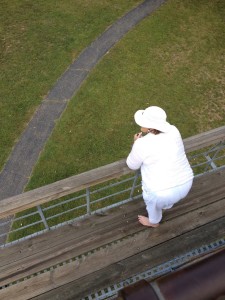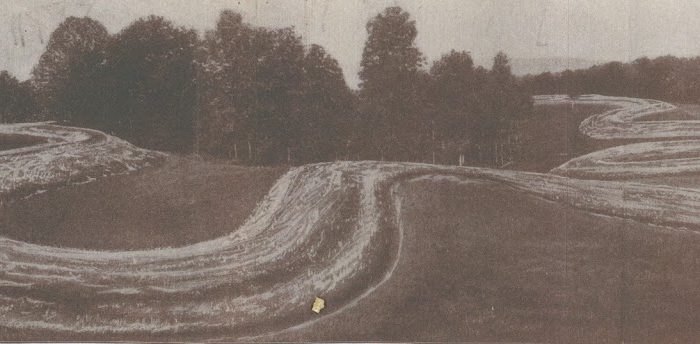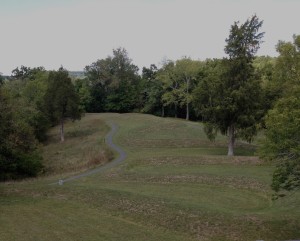Sacred Sites: The Great Serpent Mound, Part Three
 |
| Viewing from the observation tower. |
The afternoon was warm and muggy, our energies as low as the Serpent’s. Nevertheless, I rallied, finally arriving at the site I had wanted to visit ever since I learned of it many years ago. I felt impatient. A small visitor center and museum distracted some of us; I could not wait. I allowed the observation tower to draw me and I climbed to view the Serpent from the air.
Later when I read an account by Professor Frederick W. Putnam of Harvard University, the man responsible for preserving the Serpent, I understood his awe. When he first approached the mound, also in September, but 129 years before, he stated that “The most singular sensation of awe and admiration overwhelmed me at this sudden realization of my long-cherished desire, for here before me was the mysterious work of an unknown people, whose seemingly most sacred place I had invaded” (Map and Guide to the Great Serpent Mound, by W.H.Cole, 1925, 4).
The site is sacred, though I would also say, sleepy. The earthwork is enormous, and in some places along the walk by the coils, some six feet high, you feel snake. When we returned in the predawn hours of the next morning, we felt energy. Perhaps in our own sleepiness we were more receptive. Visions came more quickly: a golden serpent, a certain peace. Yet I suspect this was only a shade of what had been experienced thousands of years before.
Putnam was responsible for saving the Serpent. So many of these mounds and earthworks were destroyed, either through ignorance of what was there, or disregard and dismissal. Two years after he first visited the mound, Putnam returned to discover the farmer was now cultivating some of the mound, and he bought the 70 acres it was on for what must have been quite a sum of $6000. He then spent time clearing the Serpent and developing a park. He eventually donated the land to the Ohio Archeological and Historical Society “on the express condition that the State should forever preserve and maintain it as a free Public Park open to the people…” The Society stated that was it was to remain a “Place for Study and Inspiration” (Cole, 6).
In the next weeks I want to explore this experience of “sleepiness” in a sacred site. Sacred sites exist in many dimensions, growing us into those dimensions through ritual. But what happens when the rituals stop? And what happens to us? Is the Great Serpent hibernating, waiting for the cold of this period of dimmed consciousness to turn, the warmth of the sun, and our informed attention, to again to warm its great coils? Through the great efforts of preservation by Putnam and men like him, motivated by inspiration, and then through the exploratory and visionary work of Ross Hamilton (Star Mounds: Legacy of a Native American Mystery, 2012), whose study of the last 30 years has brought the Serpent back into the collective eye, we are able to ask these questions in the presence of this Giant. They are questions which bring dialogue, dialogue that may bring answers our earth and spirit dearly need.

